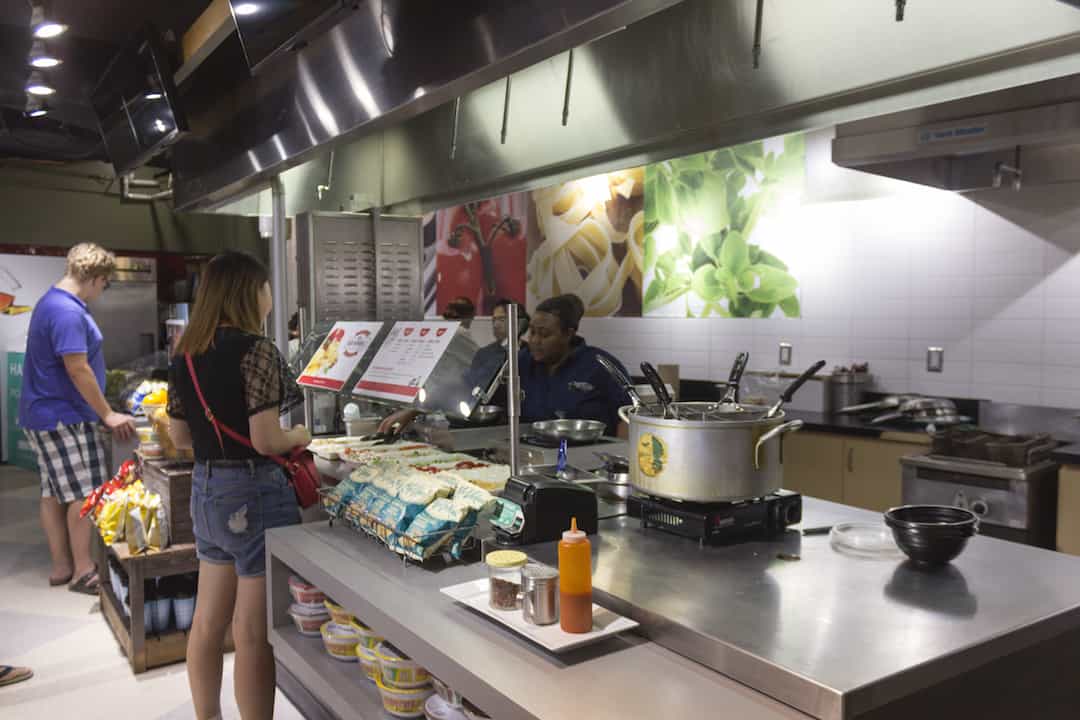In the midst of physical distancing measures and stay-at-home guidelines under the COVID-19 pandemic, U of T has temporarily laid off scores of workers at the university.
CUPE 3261, which represents service workers, and USW 1998, which represents administrative and technical workers, experienced 93 and 92 layoffs, respectively, as of June 27. This amounts to a total of 185 employees between the two unions. Although the university and federal government are providing some financial support, workers continue to face uncertainty and hardship under the pandemic.
U of T closed buildings across all three campuses on March 16 in response to provincial public health requirements, leaving workers who could not perform their work remotely in a precarious position.
After an initial period of pay continuity, layoffs began in May — targeting jobs in services like parking, food, and athletics that could not operate or were partially shut down as a result of campus closures, and could no longer generate adequate revenue to sustain the regular level of employment.
Financial support from university, government
CUPE 3261 and USW 1998 have been active engaging with U of T Labour Relations about how to best support their members.
Allan James, President of CUPE 3261, explained in an interview with The Varsity that “the union is supporting all of the laid off members” with accessing the Canada Emergency Response Benefit (CERB), which provides $2,000 per month for eligible Canadians whose employment has been affected by the pandemic.
Colleen Burke, President of USW 1998, called the layoffs “unfortunate” and “difficult” for members to weather. However, she acknowledged that U of T carried them out in accordance with their collective agreement.
U of T, in one instance, went above its contracted responsibilities while pay continuity was still in effect by providing casual workers with paid sick leave — a measure not originally included in casual contracts.
“The university has worked hard to limit the number of temporary layoffs and to support affected employees,” a university spokesperson wrote to The Varsity.
To further supplement CERB payments from the federal government, U of T developed a temporary income top-up scheme that provides laid-off workers with up to 80 per cent of their regular income — amounting to $1,000 — in addition to CERB. This means workers can receive up to $3,000 a month.
The university is restricted from increasing benefits under the top-up scheme as Canadians who receive more than $1,000 a month are ineligible to apply for CERB.
All casual and full-time U of T service staff received pay continuity and paid sick leave until April 30.
Workers face hardship
Despite financial aid provided by the university and the federal government, COVID-19 related layoffs have negatively impacted U of T service, administrative, and technical workers. Burke predicts that many of their employees will fall on hard times. “It is going to be very difficult for our members to live on the CERB plus top-up, particularly if other people in their household are also laid off,” Burke explained in an email to The Varsity.
She also commented that their casual unit “has been very hard hit” and that many of the USW 1998 casual workers’ contracts have not been renewed because of the pandemic. “Our casual unit has shrunk by 700 people from the same time last year,” Burke wrote.
The temporary layoffs have also drawn external criticism for its impact on workers, notably in a June 29 letter to the administration from 19 faculty members at the Dalla Lana School of Public Health. “These workers deserve employment security, not least because of precarity’s lasting negative consequences for both physical and mental health,” reads the letter, which calls on the university to “live up to its reputation as Toronto’s best employer and retain staff members on the payroll.”
COVID-19 related layoffs are not the only hardship that workers have faced. James expressed his concern about the province’s treatment of service workers in general and hopes this pandemic can act as a catalyst for change.
“The reality is that workers were already suffering before the pandemic,” James wrote. “Now they are suffering more, and our future looks uncertain.”
He urges all levels of government to address the bigger picture of income inequality and “invest in people, invest in strong public services, support decent work and fair minimum labor standards and focus on getting us through COVID and beyond without imposing any cuts or austerity policies.”
Uncertainty as campus plans to reopen
U of T is developing plans for a safe return to campus; however, U of T is uncertain of when exactly employees will be called back to work. The uncertainty presents more challenges to employees, particularly casual workers who “may not be eligible for [Employment Insurance] when CERB runs out,” Burke wrote.
A university spokesperson wrote to The Varsity that the university is working closely with public health authorities and governments to determine the appropriate time to bring back workers in the safest way possible.
The letter from members of the public health faculty, however, raises concerns about university’s lack of consultation with its joint public health and safety committees in making decisions concerning the protection of workers. The letter calls on the university to “ensure adequate workplace health and safety measures by consulting with relevant groups [unions, faculty and employee associations, and front-line management] prior to the University’s reopening process.”
On July 7, U of T announced a new mask policy that will require individuals to wear a mask inside U of T buildings, in line with the City of Toronto’s new bylaw that mandates mask-wearing in indoor public spaces. U of T will distribute two non-medical, reusable face masks to members of the U of T community, including the university’s workers.
— With files from Ibnul Chowdhury
Editor’s Note (July 25, 3:49 pm): This article has been updated to distinguish between CUPE 3261 and USW 1998 as representing service workers and administrative and technical workers, respectively.


